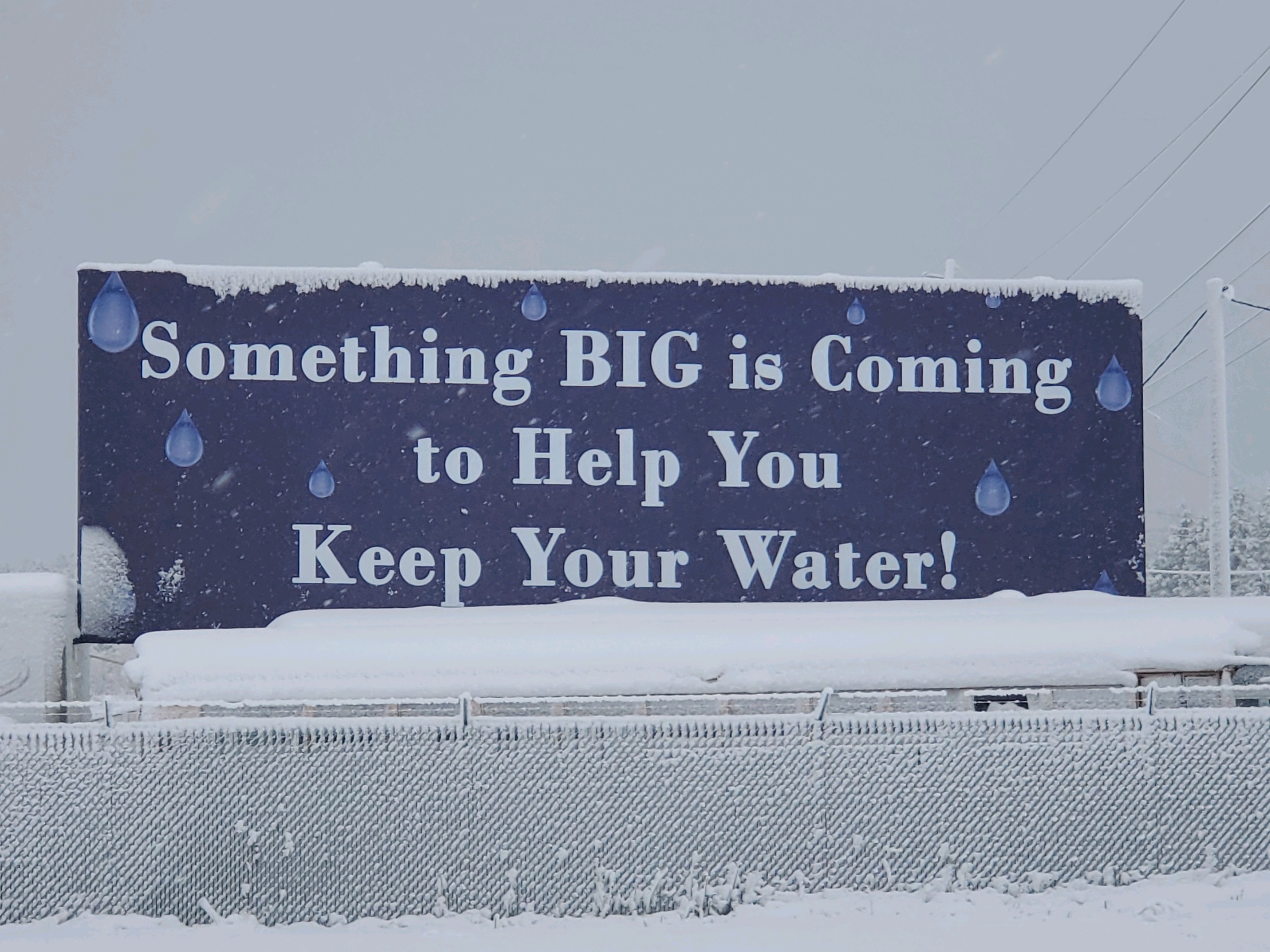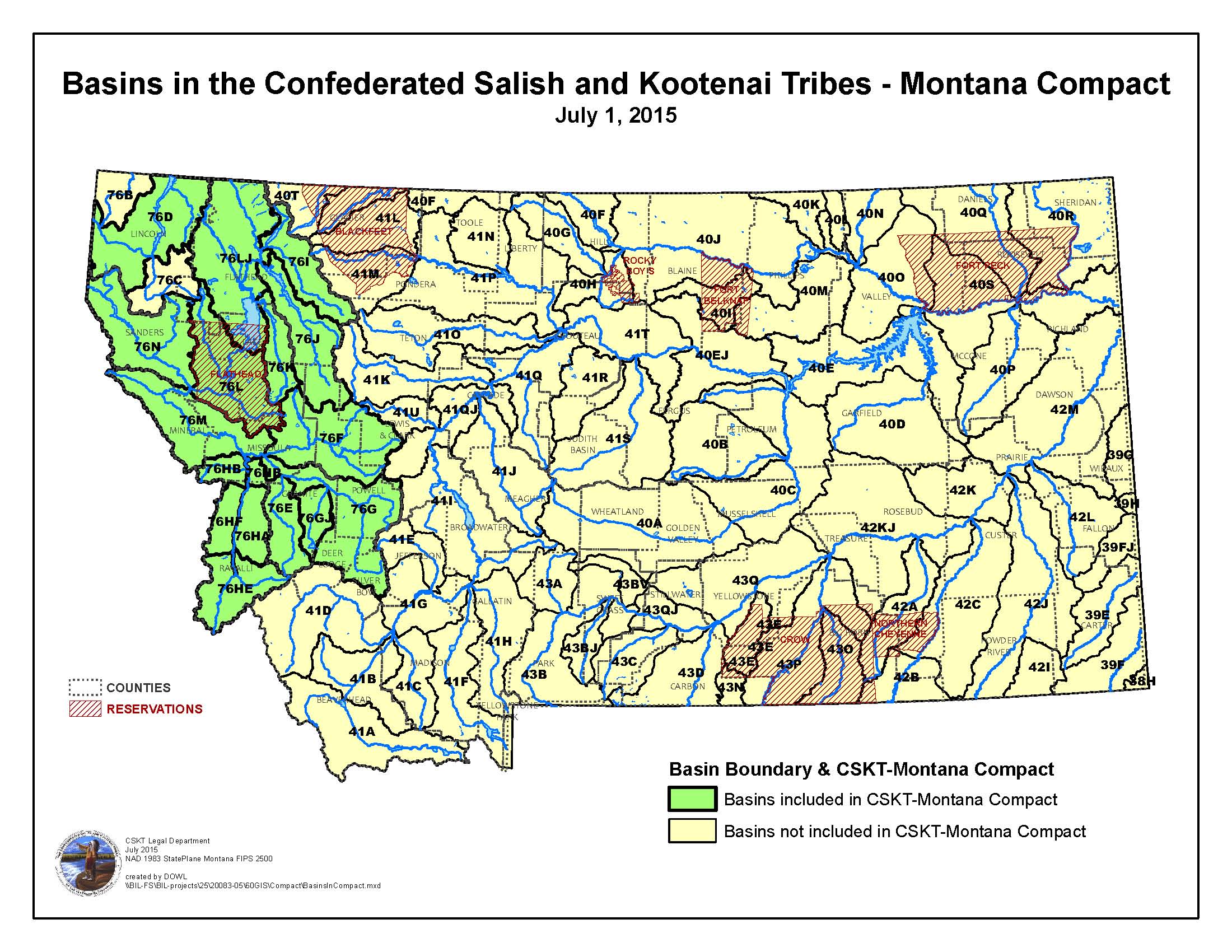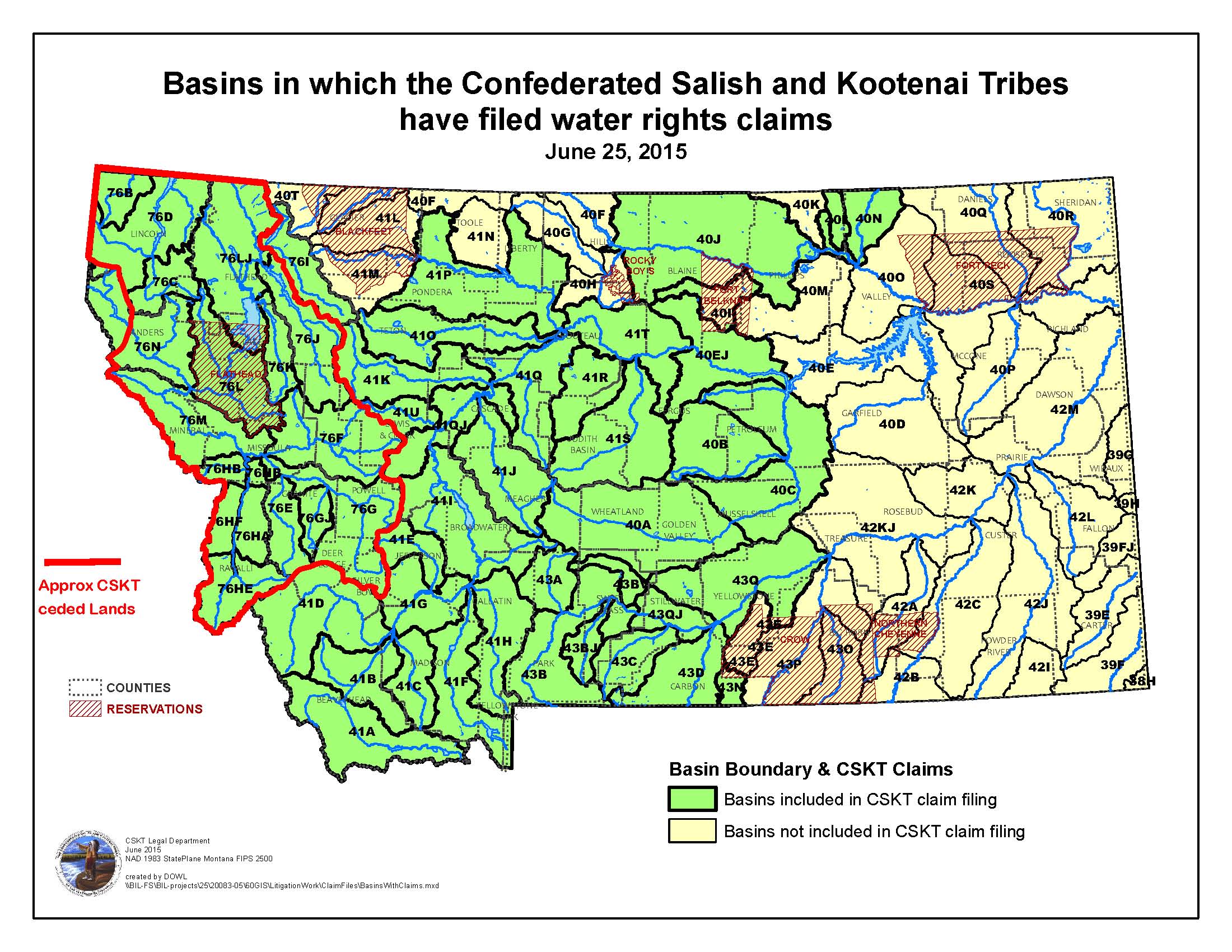© 2022 Concerned Citizens of Western Montana
When we first moved to this beautiful area nearly two decades ago, realtors touted it as the only Open Reservation in Montana, citing how Indian and non-Indian peoples lived together peacefully as friends, neighbors and even as family members.
The unedited historic record of the reservation bears this out.
In 1859 the Treaty with the Flatheads was ratified by Congress, along with its Article VI provisions for the eventual allotment of reservation lands to individual tribal members. Once the allotments had taken place, any remaining reservation lands were to be sold, with the proceeds intended for the benefit of the Indians.
Hence, the ultimate purpose of the treaty was for individual homesteads for tribal members. History also bears out that federal government officials earnestly went about fulfilling their commitments as specified in the treaty. In fact there is little doubt that the terms of the treaty were fulfilled when the reservation was allotted, opened to homesteading, and the irrigation project was built to make both Indian and non-Indian lands as productive as possible.
In 1887, Congress passed the Dawes Act, or General Allotment Act. This act granted allotments of land to individual Indians. Then after the individual parcels were granted to individual Indians or families out of reservation land, the reservation’s unallotted lands were placed back into the public domain, and were then sold, mostly to settlers. The Indian Allotment provisions of the Dawes Act have since been repealed. Source.
In 1904, the Flathead Allotment Act set the wheels in motion for allotments to individual Indians, and paving the way for settlers within what Congress called “the Former Flathead Indian Reservation.” After the reservation was allotted, the 1908 Act authorized the construction of the Flathead Irrigation and Power Project to serve all lands on the reservation. While this act was amended somewhat over the years, Steve Daines modified it again in 2021 with his compact legislation. This additional rewrite of history is a poorly disguised effort to make their “new and improved” history comport with the flawed assumptions that the compact was built from.
The Flathead Reservation was opened the settlement by Presidential Proclamation in 1909, Today, 90% of the population within the historic boundaries of the reservation is non-Indian.
The individual allotment policy continued in the Flathead and in other areas of the country until 1934 when it was terminated by the Indian Reorganization Act.
Words really do matter, and while assimilation at one time was an expected outcome of America’s amazing melting pot, to the best of our knowledge, it was never meant that people should lose their rich heritage, or familial relationships, or even their traditions, but rather that we all were free to seek our own American Dream under the umbrella and protection of the United States Constitution.
Tribal members became United States citizens in 1924.
We all have God given rights that are not negotiable, nor can they be taken away, as much as our respective governments may try.
The word “assimilation” is now used with great disdain, as though it was intended to be a form of ethnic cleansing. If that were true, then the Flathead Compact and Senator Daine’s Montana Water Rights Preclusion “Protection Act” could also be considered ethnic cleansing.
The Daines legislation was built upon a flawed “Indian water settlement” construct, and is a blatant attempt to close what is and forever will be known as an “open reservation.”
This compact induced “reservation closing” was meant to be accomplished through the preclusion of all new uses of water, and U.S. / Tribal government control over all existing uses of water within the reservation’s boundaries. It proposes, we believe, that the tribes own all the water flowing through, over and under the Flathead Reservation. This map of Flathead Reservation instream flows in the compact were taken directly from the information provided in the abstracts in the appendices.
Does it not look like a millstone draped around the neck of the 30,000 or more people, Indian and non-Indian, living within the reservation’s boundaries?
The compact also sets the wheels in motion for a water rights Phase II if you will. Phase II pertains to the tribes “off reservation claims that will preclude new uses of water in lands located within the tribe’s “aboriginal ceded” territory. It establishes a framework for federal control over these waterways, increasing the potential for litigation in those areas for generations to come. This is much like the Obama administration’s failed “Waters of the United States Rule”–seeking control over all water.
Phase III includes the United States and CSKT 10,000 claims covering 2/3 of Montana. These claims, unchallenged by the state of Montana and for all intents and purposes hidden from public view, also provide a future litigation / control pathway for the U.S / CSKT. It’s disconcerting to see the United States using their congressionally created tribal government constructs as a means to control and recapture the lands of the west.
Montana’s Constitution says the state owns the water for the benefit of all of its citizens. How is it then, that the State buried its relinquishment of that ownership, and its constitutionally mandated jurisdiction over it in a 1,500 page “water compact?”
The State wholly endorses the Flathead Water Compact, a document that sets the stage for what is hoped by bureaucrats and tribal government attorneys, to be a mass exodus of undesirables from the reservation, whose lives, livelihoods and lands will be diminished or destroyed, without compensation. Thirty thousand or more people are little more than collateral damage to the bureaucrats and politicians who brought us this disaster.
Does Montana not understand that its abundant water, and the use of it for the benefit of its citizens, is in the state’s best interest? We all know that water is necessary for the life of every human being, and our very survival depends upon our ability to earn a living from the property we purchased and have labored on with our own blood, sweat and tears.
If placing a stranglehold on the water wasn’t enough, the compact also picks winners and losers. While all people in western Montana are affected by it, some, such as irrigators will more quickly find themselves at the losing end of this so called “negotiated settlement.”
A Glimmer of Hope
But those who hope in the Lord will renew their strength. They will soar on wings like eagles; they will run and not grow weary, they will walk and not be faint. Isaiah 40:31
What is it they say about “the best-laid plans of mice rats and men bureaucrats?
While it would seem that the water compact millstone has been placed firmly around our necks, and is ready to be released, a few things have changed in the past several years that could very well shift the pendulum away from this government derived “water rights tyranny.”
One is the recent housing boom that brought an influx of many new people, and new energy into western Montana, that are now residing both outside of and inside the boundaries of the Flathead Reservation. No different than 20 years ago, we have heard from many people that they purchased their property without knowledge of the serious water compact issues that western Montana is dealing with.
This influx of new people represents a symbolic re-opening of the reservation, with the potential to bring about changes that we believe can provide the momentum needed to reverse the never ending gaslighting and demoralization of the people that has occurred here over the past several decades.

We can’t help but smile at the realization that this influx of new people cannot be sitting well with the three governments who have done all they could to stifle new settlement and growth in western Montana. Poor Tim Fox could not have contemplated this new development when he told a legislator in 2015 that of course there are problems with the compact, but it’s too expensive to sue, so he wasn’t worried about litigation from Montanans impacted by it.
What kind of help does the above billboard located within the reservation boundaries reference? Only time will tell as more information is unveiled.
A friend used to talk about us all being frogs in a pot of water. It’s becoming abundantly clear that our new neighbors are not about to jump into a pot of what now is almost boiling water. Their fresh eyes, and energy will breathe new life into the battle to protect what is rightfully ours.
Simply put, newcomers, many of whom we are now hearing from, and old timers as well, are no longer willing to accept the narrative that they bought property with diminished water rights, or that they have squatted on the tribe’s property and water rights for decades. It is not okay with them that Montana has relinquished its protection and jurisdiction over our land and water. They also know that what Montana has done is illegal and unconstitutional.
Frankly, the tired old talking points of the three amigos are part and parcel of the fraud that brought us the compact. People are not happy with the ridiculously lopsided outcome of their decades long “negotiations.” It’s no longer acceptable or believable to hear that the tribal government settled for far less in this compact than they would have received through litigation.
The objection process for the Flathead Compact Decree has spurred a very large number of people who are planning to send in objections to the water court. They are now working diligently to understand which details of a 1,500 page Flathead Water Compact will affect their important and valuable water and property rights.
We certainly hope that they follow through with their objections, and that the water court realizes there are many thousands of other people who did not file, but who also oppose all that this compact stands for.
Thanks to all of you for your efforts to beat back this monstrosity.
Follow our blog
If you’d like to receive email notifications when we post something on the blog here’s how to do it:
To Follow the Blog: While on any page of the blog, you will see a list of recent blog posts on the left side of the page. Scroll down to just below the articles and you will see a section that says:
Follow the Western Montana Water Rights Blog via Email. Enter your email address and click the button that says FOLLOW.
It’s that easy!




I am very concerned about this situation. I do own property North of Polson and just had a well drilled on it, but have not installed a pump or completed the paperwork. Am I excluded from making an objection, as I haven’t completed installation or the paperwork? I am concerned how all of this will effect my property value and a potential sale at some point in the future. I feel as though the State is infringing on my rights, I am a lifelong Montana resident and feel they are stabbing me in the back by dealing away my potential use to the water and the decreased property value. It is very disheartening and maddening.
Mr. Robbins. Thanks for your great question.
I am not an attorney and cannot give you legal advice, however, common sense tells me that even undeveloped property has appurtenant water rights associated with it. You may very well find that the land patent for your property mentions water and other appurtenances.
For that reason, i would absolutely consider filing an objection to the water court. Provide specifics concerning the legal description of your property, and specific information concerning the well you had drilled, and express the concerns you have mentioned related to the value of your land.
You may also want to look into the Flathead Water Management Board’s move to place a moratorium on groundwater development so that the water court is aware of that as well. I am not familiar with the facts of the moratorium situation, but recall hearing that Lake County stepped in to try to help with that situation.
If you want to look up your land patent, please check out this document with instructions on how to find it:
Click to access walton-rights-updated-oct-2022.pdf
Thanks for taking the time to contact us. Good luck with your objection. Please let us know how it goes.
When we met with Daines’ representative last year, I asked him if my updated land patent would stand against this unconstitutional power grab. He told me that Daines said the land patents would not stand. How can a senator just dismiss what a former president has signed into law? Daines is a traitor just like Tester, Bullock and now our esteemed governor, Gianforte. We are dropping over the cliff and into the abyss of full-blown
socialism.
Thank you so much for sharing this information.
We’ve known about the impact this compact will have on land patents, however to be told that our “senator” understands this harm, and actually set the wheels in motion for it through his legislation, is like a punch in the stomach.
We sincerely hope this information gets out publicly, and becomes the impetus for hundreds more objections to the water court.
Pingback: Overreach | Western Montana Water Rights